- Home
- Features
- Movies/Media
- Collectibles
- Comics/Books
-
Databases
-
Figure Database
>
-
X-Plus Toho/Daiei/Other
>
- X-Plus 30 cm Godzilla/Toho Part One
- X-Plus 30 cm Godzilla/Toho Part Two
- X-Plus Large Monster Series Godzilla/Toho Part One
- X-Plus Large Monster Series Godzilla/Toho Part Two
- X-Plus Godzilla/Toho Pre-2007
- X-Plus Godzilla/Toho Gigantic Series
- X-Plus Daiei/Pacific Rim/Other
- X-Plus Daiei/Other Pre-2009
- X-Plus Toho/Daiei DefoReal/More Part One
- X-Plus Toho/Daiei DefoReal/More Part Two
- X-Plus Godzilla/Toho Other Figure Lines
- X-Plus Classic Creatures & More
- Star Ace/X-Plus Classic Creatures & More
-
X-Plus Ultraman
>
- X-Plus Ultraman Pre-2012 Part One
- X-Plus Ultraman Pre-2012 Part Two
- X-Plus Ultraman 2012 - 2013
- X-Plus Ultraman 2014 - 2015
- X-Plus Ultraman 2016 - 2017
- X-Plus Ultraman 2018 - 2019
- X-Plus Ultraman 2020 - 2021
- X-Plus Ultraman 2022 - 2023
- X-Plus Ultraman Gigantics/DefoReals
- X-Plus Ultraman RMC
- X-Plus Ultraman RMC Plus
- X-Plus Ultraman Other Figure Lines
- X-Plus Tokusatsu
- Bandai/Tamashii >
- Banpresto
- NECA >
- Medicom Toys >
- Kaiyodo/Revoltech
- Diamond Select Toys
- Funko/Jakks/Others
- Playmates Toys
- Art Spirits
- Mezco Toyz
-
X-Plus Toho/Daiei/Other
>
- Movie Database >
- Comic/Book Database >
-
Figure Database
>
- Marketplace
- Kaiju Addicts
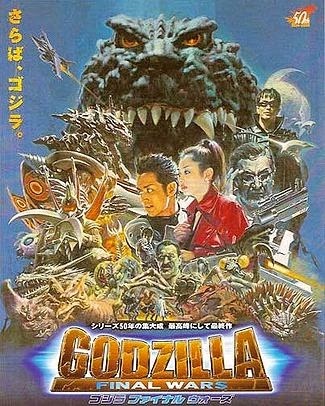 Godzilla: Final Wars (ゴジラ ファイナルウォーズ Gojira: Fainaru Wōzu) is a 2004 Japanese Science fiction Kaiju film directed by Ryuhei Kitamura, written by Wataru Mimura and Isao Kiriyama and produced by Shogo Tomiyama. It is the 28th installment in the Godzilla film series, and the sixth in terms of the series' Millennium era. The film stars Masahiro Matsuoka, Don Frye, Rei Kikukawa, Kane Kosugi, Maki Mizuno and Kazuki Kitamura. The film is set in a future where mutant soldiers are in the ranks of the Earth Defense Organization. An invasion by the alien Xiliens unleashes a legion of giant monsters across the world, leaving behind only a few surviving humans. The survivors travel to the South Pole to free Godzilla from his frozen prison while another group attempts to infiltrate the alien Mothership and take out the Xiliens. As a 50th anniversary film, a number of actors from previous Godzilla films appeared as main characters or in cameo roles. In addition, various Kaiju (monsters) made reappearances, as most were last seen more than 30 years earlier. Godzilla: Final Wars premiered on November 29, 2004 in Los Angeles, California and was released on December 4, 2004 in Japan. Before the world premiere, Godzilla received a star on the Hollywood Walk of Fame. Director Ryuhei Kitamura has compared Godzilla: Final Wars to that of a musician's "Best of" album, stating "We picked lots and lots of the best elements from the past and combined it in a new way. It's what I love about Godzilla and what I don't love about recent Godzilla movies". 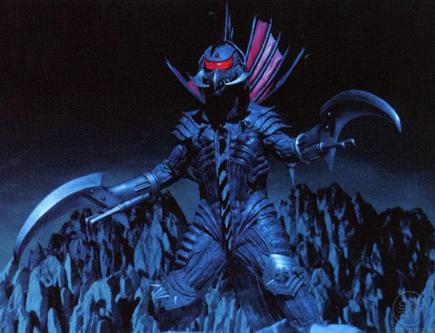 Plot In 2004, endless warfare and environmental pollution has resulted in dangerous kaiju and the Earth Defense Force (EDF) is created to protect the planet. The organization is equipped with the best technology, weapons and soldiers, as well as mutants with special abilities. Godzilla is the EDF's only unstoppable opponent. The EDF's best combat vehicle, the Gotengo, corners Godzilla at the South Pole and buries him under the Antarctic ice, freezing him alive. Forty years later, the EDF discovers a mummified space monster. The mutant soldier Shinichi Ozaki and the United Nations biologist Dr. Miyuki Otonashi are sent to research it. Shortly thereafter, the two encounter the Shobijin, fairies of the guardian monster Mothra, who reveal that the monster is Gigan, an alien cyborg sent to destroy Earth 12,000 years earlier. They also warn that a battle between good and evil will happen soon and that Ozaki, because of his mutant capabilities, must choose between the two. Suddenly, kaiju appear in major cities. The EDF attempts to drive them away. The monsters include Anguirus in Shanghai, Rodan in New York City, King Caesar in Okinawa, Kamacuras in Paris, Kumonga in Arizona, Zilla in Sydney and Ebirah near Tokyo. Despite defeating Ebirah, the EDF is unsuccessful in destroying the monsters. After destroying most of the cities, the monsters vanish and an enormous alien mothership appears over Tokyo. The aliens, known as Xiliens, say that they are friendly and have eliminated the monsters. They also warn the Earth about an impending asteroid called Gorath that will impact soon. Because of their seemingly-friendly nature, the UN is disbanded and the Space Nations, an alliance to unite the universe, is organized. Ozaki, Miyuki, Douglas Gordon (the Gotengo's captain) and several others distrust the aliens. Using research and undercover work, they discover that the Xiliens are actually the ones who unleashed the kaiju; and that they also replaced several members of the EDF with android duplicates. They plan on subjugating humanity to harvest their mitochondria for food. The Xiliens are exposed on television. Opposed to the Xilien commander's decision to subtly take over Earth, his subordinate, the Regulator named X, kills the commander and assumes control of Earth's mutants, except for Ozaki. The kaiju are again released in Earth's major cities. Ozaki, Miyuki, Gordon, and others flee to their secret facility, and the EDF is defeated. On Mt. Fuji, a hunter, Samon Taguchi, and his grandson, Kenta, discover Minilla, Godzilla's son. They are successful in keeping a low profile and hiding from the Xiliens' assault. 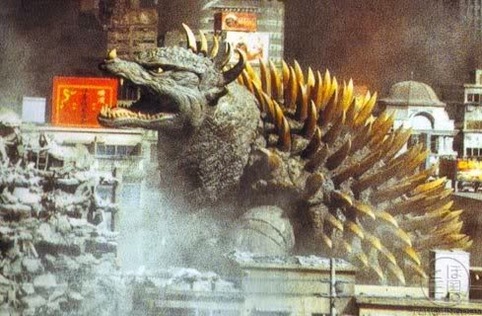 Gordon proposes freeing Godzilla to allow the dinosaur to defeat the other kaiju. Using the Gotengo, the EDF goes to Antarctica while being chased by Gigan. After Godzilla is released from his hibernation, he kills Gigan, and follows the Gotengo. The Gotengo returns to Tokyo, hoping Godzilla will unwittingly defeat the Xiliens. The Xiliens send the controlled kaiju after Godzilla, but he defeats them in short battles. While all of the other kaiju are presumably killed, Godzilla apologize Anguirus, Rodan, and King Caesar for beating each other's (breaking free their controls), all of whom he defeated near Mount Fuji. The Gotengo and Godzilla arrive at Tokyo, whereupon the Gotengo enters the mothership. During the battle, Ozaki's friend Kazama destroys the Mothership's shield generator at the cost of his own life. Meanwhile, the asteroid Gorath strikes Godzilla. Monster X materializes and starts to battle Godzilla. Gigan, who has now been upgraded, aids Monster X, but Mothra arrives to engage him into battle. Inside the Xilien mothership, the humans confront the Xilien Regulator. Ozaki is revealed to be a "Keizer", an all-powerful being capable of controlling Earth. Deciding to stay with the humans, Ozaki fights the Xilien Regulator, who is also a Keizer. After an extended battle, the humans are victorious and flee the Mothership's destruction. During their battle, Gigan hits Mothra with a laser beam, causing her to be engulfed in flames. However, Mothra is able to kill Gigan with a kamikaze-style attack. With Gigan and Mothra dead, Godzilla continues his battle with Monster X, who mutates into Keizer Ghidorah. Keizer Ghidorah initially has an advantage over Godzilla using lightning to overpower him, and it drains Godzilla's power through its teeth. Ozaki aids Godzilla by transferring some of his Keizer powers over to the monster and Godzilla prevails over Ghidorah. He then turns to attack the Gotengo, but a much larger Minilla arrives, along with the hunter and his grandson, and blocks his father from harming the humans, which causes Godzilla to realize that he must forgive mankind. The survivors watch as Godzilla and Minilla head back to the ocean, as Godzilla turns and lets out one final roar. During the credits we see that Mothra actually is still alive as she is seen flying back to Infant Island. Cast
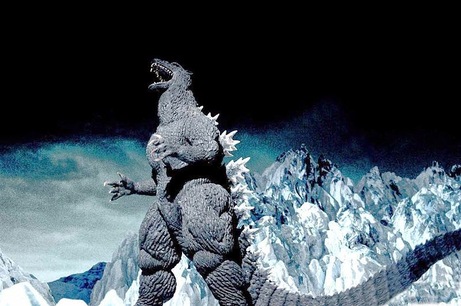 Nearly every monster in the Toho Kaiju stable appears in this movie at some point, even those such as Hedorah who were otherwise barred from use by Toho. In addition to being a nod to fans, this was to make the Xilien forces appear as numerous and threatening as possible while keeping the budget under control by using costumes already on hand. Several computer animated monsters were created for use in the film. They consist of Manda, Mothra, Kamacuras, and Zilla. Stock footage from previous films were used for other monsters, such as Varan, Gaira, Baragon, Gezora, Titanosaurus, Mechagodzilla, and Megaguirus. The costumes for Rodan, Anguirus and King Caesar were used for fan events after the plans to destroy them were removed. Production Just like regular Godzilla films, Godzilla: Final Wars makes extensive use of practical effects rather than CG. The special effects were directed and supervised by Eiichi Asada, who also directed the special effects for Godzilla: Tokyo SOS. Commenting on the special effects, Kitamura stated at the film's world premiere in Hollywood, "We stick to the special effects. That’s what we've been doing for 50 years. And that’s why Hollywood don’t do it. So on the first meeting, I told everybody that we stick to the special effects, and the live action instead of CGI. So it’s a CGI-monster-Hollywood Godzilla versus our man-made live-action monsters." Music The music in Godzilla: Final Wars was composed by Keith Emerson, Daisuke Yano and Nobuhiko Morino, while the band Sum 41 contributed the song "We're All To Blame" to the soundtrack (and received high billing in the film's opening credits sequence). Some critics expressed concern with the music of Final Wars, arguing that Emerson's score would be better suited for a campy made-for-television movie or video games, while others pointed out that it made a refreshing change from the music of previous Godzilla films. Akira Ifukube's themes were mostly absent from the movie, though Godzilla's original theme can be heard at the beginning of the film. However, Keith Emerson did cover the Godzilla theme which is available on the film's official soundtrack. The cover is entitled "Godzilla (Main Theme)". The bands Sum 41 and Zebrahead contributed the tracks "We're All To Blame" and "Godzilla vs. Tokyo" respectively, to the film, however neither song was on the film's soundtrack.  Filming locations Godzilla: Final Wars began filming in July 2003. The locations of filming included Sydney, Egypt, New York City, Paris, Shanghai, Arizona and Tokyo. Critical reception Godzilla: Final Wars has received extremely mixed reviews from film critics and fans alike. As of May 2011, review aggregate Rotten Tomatoes reports that 44% of critics gave positive reviews for the film based on nine reviews. Steve Biodrowski of Cinefantastique called the film "utterly fantastic" and "a rush of explosive excitement." Jim Agnew of Film Threat gave the film four and a half stars out of five, saying "the good news for kaiju fans is that Godzilla: Final Wars is a kick-ass giant monster flick." Drew McWeeny of Ain't It Cool News remarked, "Godzilla: Final Wars earns a special place in my heart. It's fun. Pure lunatic fun, every frame." Sean Axmaker of Static Multimedia said, "Directed by a true fan of the old school, it's lusciously, knowingly, lovingly cheesy." Craig Blamer of the Chico News & Review called the film "a giddy and fast-paced celebration of the big guy." Conversely, David Nusair of Reel Film gave the film one and a half stars out of five, saying that "the battles are admittedly quite entertaining" but felt that director Ryuhei Kitamura "is absolutely the wrong choice for the material." David Cornelius of eFilmCritic gave the film two stars out of five, calling it "the dullest, weakest Godzilla movie I've seen in a long, long time." Ty Burr of the Boston Globe gave the film one and a half stars out of five, saying it focused too much on action and not enough on story, and calling it "35 minutes longer than is necessary."  Among kaiju-related websites, J.L. Carrozza of Toho Kingdom "absolutely love[d]" Final Wars, saying "[it's] no masterpiece, but it is such insane fun that quite frankly it's hard not to adore it." Mike Bogue of American Kaiju said "the film is flawed, but nonetheless entertaining," saying there are "too many [Matrix-style] battles" but that the film "makes excellent use of its monsters" and "Kitamura keeps things moving at a brisk pace." Japan Hero criticized the "[lack of] character development" but concluded that Final Wars is "a very entertaining movie," saying that "Kitamura did a wonderful job making it an interesting and great looking film worthy of being the final [Godzilla] movie." Stomp Tokyo said "the monster scenes are generally well done" but criticized the film's "incoherence," saying: "It's a shame that Kitamaura couldn't choose a tone for the film, instead shifting the movie's mood wildly from scene to scene." Lenny Taguchi of Monster Zero criticized Keith Emerson's soundtrack but gave Final Wars an overall favorable review, calling it a "fun and good" movie that "tries many things, and generally succeeds at almost all of them." Director Kitamura commented at the film's world premiere that the reason why he agreed to direct the film was because he wanted to update Godzilla and recapture the same spirit seen in the later Godzilla films from the Showa era. He wanted to incorporate the same speed and power seen in films like Godzilla vs. Mechagodzilla, which he believed was lost somewhere within the series, stating, "The Godzilla series had lost that kind of taste. I think that back in the '70s Godzilla movies had more power and speed. He was very fast and he was very strong. So in my Godzilla, you know, less dialogue and more action. That’s more fun than watching people discuss and what we should do about Godzilla. As a Godzilla fan I want to see Godzilla punching and kicking, beating up all the other monsters instead of somebody talking again, you know, discussing the operation. That's what I wanted to do is to revive that, but not in the same way, I have to update. This is the updated version of '70s, crazy, monster movies." 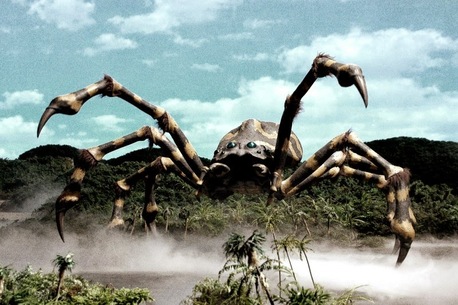 Box Office At roughly $19,500,000, Godzilla: Final Wars was the most expensive Toho-produced Godzilla film of all time. Any hopes Toho had of Godzilla: Final Wars ending the series with a box office bang were stifled when the film opened in Japan on December 4, 2004. In its opening weekend, it came in third at the box office with $1,874,559. At the holiday season box office, it was beaten by Howl's Moving Castle and The Incredibles, both which also pursued the family market. It eventually grossed roughly $12,000,000 at the Japanese box office, with 1,000,000 admissions. Not only was it the least-attended film in the Millennium series, it was also the least attended film in 29 years since Terror of Mechagodzilla. Home Media Releases (US) Sony Pictures Home Entertainment Released: December 13, 2005 Aspect Ratio: Widescreen (2.40:1) Anamorphic Sound: Japanese (Dolby Digital 5.1) English (Dolby Digital 5.1) Subtitles: English and French Supplements: Behind-the-Scenes Featurette (comparison of B-roll footage to finished film)(17:53 min); Trailers for Final Fantasy VII Advent Children, Steamboy, Dust to Glory, MirrorMask, and Madison Region 1 MPAA Rating: Rated PG-13 for Intense Sequences of Violence. Blu-ray will be coming out May 6, 2014 as a double feature with Godzilla: Tokyo SOS.
0 Comments
Leave a Reply. |
Release Dates
November 2023
|
|
© 2011-2024 Kaiju Battle. All Rights Reserved.
|
Visit Our Social Media Sites
|
Proudly powered by Weebly
|
- Home
- Features
- Movies/Media
- Collectibles
- Comics/Books
-
Databases
-
Figure Database
>
-
X-Plus Toho/Daiei/Other
>
- X-Plus 30 cm Godzilla/Toho Part One
- X-Plus 30 cm Godzilla/Toho Part Two
- X-Plus Large Monster Series Godzilla/Toho Part One
- X-Plus Large Monster Series Godzilla/Toho Part Two
- X-Plus Godzilla/Toho Pre-2007
- X-Plus Godzilla/Toho Gigantic Series
- X-Plus Daiei/Pacific Rim/Other
- X-Plus Daiei/Other Pre-2009
- X-Plus Toho/Daiei DefoReal/More Part One
- X-Plus Toho/Daiei DefoReal/More Part Two
- X-Plus Godzilla/Toho Other Figure Lines
- X-Plus Classic Creatures & More
- Star Ace/X-Plus Classic Creatures & More
-
X-Plus Ultraman
>
- X-Plus Ultraman Pre-2012 Part One
- X-Plus Ultraman Pre-2012 Part Two
- X-Plus Ultraman 2012 - 2013
- X-Plus Ultraman 2014 - 2015
- X-Plus Ultraman 2016 - 2017
- X-Plus Ultraman 2018 - 2019
- X-Plus Ultraman 2020 - 2021
- X-Plus Ultraman 2022 - 2023
- X-Plus Ultraman Gigantics/DefoReals
- X-Plus Ultraman RMC
- X-Plus Ultraman RMC Plus
- X-Plus Ultraman Other Figure Lines
- X-Plus Tokusatsu
- Bandai/Tamashii >
- Banpresto
- NECA >
- Medicom Toys >
- Kaiyodo/Revoltech
- Diamond Select Toys
- Funko/Jakks/Others
- Playmates Toys
- Art Spirits
- Mezco Toyz
-
X-Plus Toho/Daiei/Other
>
- Movie Database >
- Comic/Book Database >
-
Figure Database
>
- Marketplace
- Kaiju Addicts

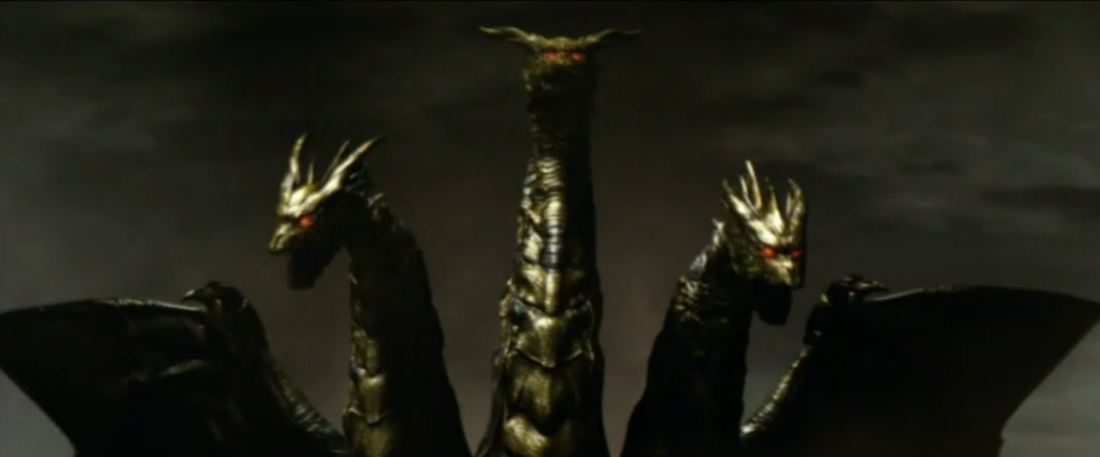
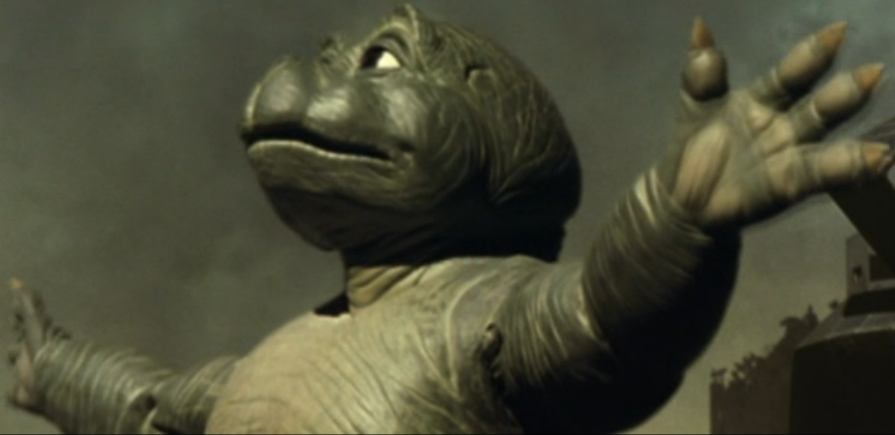
 RSS Feed
RSS Feed